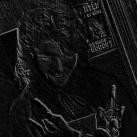All Activity
- Past hour
-

Fall 2025 Competition Poll
Omicronrg9 replied to PeterthePapercomPoser's topic in Monthly Competitions
Seems that this time I got aligned with the majority here 🗿. Goooooood, veeeeerrrry gooooooooooooood. We are close to 20 people voting. C'mon guys! -

the 3rd Movement Of Moonlight Sonata orchasrated
Omicronrg9 replied to Tunndy's topic in Orchestral and Large Ensemble
Cool video, but I prefer your Waltz in F minor 🗿 Cheers! 😁- 1 reply
-
- 1
-

-
PeterthePapercomPoser started following Abortion - A Counterfact
- Today
-
"Abortion," is a counterfact from my symphony, "Ocean Shell." The 3rd movement is recontextualized under the topic of abortion, and the title comes with its own disclaimer. The song itself is a bit of a revolving door that works well in conversation. It depicts the images that he had seen from a civilization with too many abortions. The effect is subtle psychological horror. You can hear the unerring piano striking a nerve, eventually leading to catharsis release at the end of the song. Something, resembling a human emerging from the soundscape, screeching with agony. Yet, the music is presented in a matter of fact manner, like this is normal. Listener discretion is advised? In America, we share our fears. Feel free to remix. In practice, when someone says they don't like the song, "Abortion," I tell them I don't like abortion either. You either love it or hate it. With that said, the advocacy is there in hopes that anyone can make educated decisions about the process of hard topics, in the news especially. The track was developed from the saxophone, piano and ambience added after the original sound. The saxophone is slowed using Paul's Stretch to convey the "orchestra" hidden in the horn. Altissimo peaks at a hotpoint in the sound, seering white hot spewing lashing out with ocean waves in consequence after the "blissimo." The piano really throttles throughout the song unapologetically. If you never felt guilty, you may now. Anger is accepted form of currency to the imagination in the symphony. The ambient instrument was developed by, Kim Cascone, and he was kind enough to be available for review, when he's not trapped in covert. The form is freeform, but if the altissimo were a dividing factor, a monument to the piece, then it is a diptych, where fractal frames embolden the images experienced. Pretty much anything you could say about abortion is true for the song, too. 😕 Have fun!
-
Sounds like you have a strong grasp on aTonal music! It's not repulsive as experimental atonal music, but it conveys well the message of urgency and importance to the audience. Since you have that down, I recommend exploring more compositional techniques; personally, I don't like long intros, and drawn out sections. The shape of the overall structure doesn't need to be so square. I love the dramatic qualities of the work! If you need more atonal inspiration, check out my website: www.atonalfugue.com Here, you will find that the numbers apply to just about anything. I wish you well on your total serialism journey, and I'm sure the birds do as well. Thank you!
-
String quartet Halloween piece, for me, it is. Let us hope there will be lots of entries.
-
Henry Ng Tsz Kiu started following Halloween Music - Tis the Season
-
TristanTheTristan started following Do you improvise? , Halloween Music - Tis the Season and Sci-Fi Facility Exploration
-
I've begun a challenge for myself, creating Halloween music for the month of October. So far, I have "The Raven," "Headless Horseman (Salvos)," "Cthulu," and "Bessy." Bessy, is the Lochness Monster based in Ireland, or England, I believe. Scores are also attached. The process is pretty simple. I store my numbers in the website, then work the music by more instinct and storytelling; it's so difficult to describe the joy of atonal music, so I hope the website inspires you: Projects - David Harper The website is a multitool, that manipulates your set in a linear fashion creating arrays very close to the original that you input. Further inspiration may be gathered by the in depth report generator. Physics terms are more complex, while the basics are present. Furthermore, I created one method for composing atonal fugues, and the website will generate a fugue based on that method; atonal fugues, are tough, so have at it! Other than that, the performances are based on sounds generated by, Garritan. Also, the works were instrumentalized by AI over at Suno.com! If you haven't checked it out, now is the time after Suno Studio was released giving midi access to your creations. Copyright with AI is not so complicated: Copyright in, copyright out; also Suno has your back too with protection. Anyway, anyway, the purpose of Copyright is to encourage creativity; so don't hold back on the numbers input on the website, I provided. The fractal viewer allows you to see the physical effect each note plays upon the other to make you more accurate in your composition. About the only thing the website doesn't do, is serve coffee; but you have amazing taste, already, why would you need a website?! Carrying on, each composition is Halloween themed of monster favorites in America. I'll write music about some of the folklore in the area too! Cthulu for example, is very popular in a small town I lived. The next one will be the Chuchacabra, and Big Foot later. Some horrors include zombies in the small city I live in, and everyone is excited to tell their horror story too. One that comes close is to the area is the Bell Witch, told be the amazing William Turner: Historian William Turner weaves tale of Bell Witch Thanksgiving is all about the Crucible, Canterbury Tales, so I'll see how long I can keep this thing going into November. The Raven, a macabre march blending Gothic, Romantic, with contemporary Wind Ensemble. The polarity of aTonal music to tonal, is like a crunchy smore with gooey insides. I had no idea the complex ration facing when composing in this style, so I held on until everything around me changed. The two styles are oil and water, not to mention that they are very kinetic in response to sound creating a mission impossible for the composer sometimes. My friend wanted Hisashi's music in the song, so if it reminds you of the films, Kiki's Delivery Service, you are not far off from accuracy. Cascading thirds triumph in the trumpets, also creating the 'D' section of the form, ABACADABA. Most people get it, but just say the magic word, and all your dreams come true. The nuance leaves the composer big headed, and too clever for his own good. Salvos, is a complex machine of musical systems to create the effect of omni-movement of a horseman that managed to ride around with a jackolantern on his head. Can you imagine the coordination; he must be a musician, too! The song is very festive, set at the gross tempo of 144, to give that ghoulish quality to it. It's the same tempo as Michael Jackson's, "Thriller." Though, the song is tonal, the source originates in aTonal as loosely interpretted by the AI. I went with it along with the instrumentation, that summates a fast gallop in a dark soundscape. I think AI interprets most serial music as diminished, oddly enough. It's easier to measure the major seconds as consonent, and that resembles more serialism music to me. Lochness, is a lonely pianoscape of sound. I thought it reflected how lonely Bessy is as a monster of the lake. Serialism maintained better in this version, it sounds like a hybrid. It's hard to escape that aTonal melody, so I allowed AI to interpret the melody as a "reharmonization." The spindle catches on well the isolated sounds, melody, and creates a haunting beauty. This melody was made by the fugue generator in my website. It demonstrates all styles of fugue essentially - Stretto, augmentation, diminution, and appoggiatura. Cthulu, is aTonal. I was strict with the instrumentalization process. I imagine Cthulu to make ample use of ostinato creating a normalcy, only until you find the 'C' a completely different color by the end of the song. huehuehue. Only an octopus would think of that. The chords are thick and lend from Coltrane's "Sheets of Sound." I had to double the bass part to make the melody clear for AI, and I loved the organ quality created. Enjoy! fractal-fugue (1).mid
-
- 1
-

- Yesterday
-

Oboe Concerto
GospelPiano12 replied to GospelPiano12's topic in Incomplete Works; Writer's Block and Suggestions
I will fix the parellels Yes and no lol - I liked the bass doing that contrasting figure (rhythmic wise) with the half note and qtr note, and I liked the 5ths, so I just kept it in. It's not super bad, could definitely be smoother, so I'll edit that spot. Thanks! Thanks for all your feedback -
.thumb.jpg.e5f26b712b4f9622f521b10d8a53c6d6.jpg)
Intervalic piece for Horn and Piano
Samuel_vangogh replied to Samuel_vangogh's topic in Chamber Music
Thank you! Cantus articus is my personal favourite, i shall take all of this into consideration! -
That totally makes sense. Like I said, abruptness isn't a bad thing, but aurally justified abruptness often feels more satisfying, and I think that's more the vibe you're going for with this; that is to say, I don't think you're going for something intentionally incoherent. As another example (also about birds lol) here's the first movement of Cantus Arcticus: listen as more and more weird little figures gets added to this texture, some of them very out of character, but then you sort of... get used to it. Rautavaara takes the time to make you feel like those additions are worth it, you know? (Timestamped): https://youtu.be/TO3YRZWLvQo?t=60
-
.thumb.jpg.e5f26b712b4f9622f521b10d8a53c6d6.jpg)
Intervalic piece for Horn and Piano
Samuel_vangogh replied to Samuel_vangogh's topic in Chamber Music
@Monarcheon Hey whoah! Thank you for your feedback! I'll definitely check that piece! As for the abrupt register changes: its kinda of a musical effect, since this piece is written after the conversation a duck and a bird had on my window when i was playing piano, so i wanted to represent the odd yet amusing change in sounds and flow between the two animals -
.thumb.jpg.e5f26b712b4f9622f521b10d8a53c6d6.jpg)
Intervalic piece for Horn and Piano
Samuel_vangogh replied to Samuel_vangogh's topic in Chamber Music
. -
Interesting work! It definitely borders on atonal, with some definite centricity on A that keeps it from going too far out of bounds. In fact, you've got an interesting arc here, with two (014) trichords at the beginning and end being sort of "built" off the tonic and dominant of A, even cooler because the "0" in both cases isn't the same note. It's a cool idea, something that George Walker probably would have been fond of. If there's one thing I'd point out is that a lot of the register and dynamic jumps feel a little abrupt. Now, don't get me wrong, I know that happens all the time in more avant-garde music (e.g., Crumb), but—I don't know—it feels like those have a little more pomp and circumstance to them because of the way they grow and decay. For that reason, I'd suggest playing with rhythm a lot more; giving yourself the space to do some really interesting rhythmic interplay will immerse your listener in the intervallic web you want to make instead of necessarily always having to be explicit about it with discrete musical cells of vertical harmonies and lines. The last of Saariaho's Papillons is a good example. Lots of semitones in there but it oscillates so much you just sort of recognize it implicitly and it flows between different playing styles (timestamped): Nitpicks: 1. You have it listed as Horn in F; make sure your score actually is in F (it's concert right now). 2. The fun thing about truly atonal music is that the spelling doesn't matter a ton; it's different here because you've got a pseudo-tonal thing going on, but even still, I don't think there's a need to have unnecessarily uncommon spellings like the E# in the last three measures. 3. Keep clef changes where the notes are played, not the beginning of the bar, e.g., mm. 13, 15. 4. The semitone addition in mm. 13–14 is a cool muddy echo, but I kind of want more out of it; maybe go even further into the depths?
-
Yeah, cadenzas are fun.
-
Simple motives are the best, and you've got a good one going. If you're able and not sick of it, I'd really try to take this piece and develop it (not necessarily expand it), because there's a lot that could be done here, especially since you're so early in the learning process. 1. It's good that your main motive has rhythmic variation, but I'm not always so certain that it's intentional. For instance, the version we hear at the beginning sounds cleaner to me as the kind you have in mm. 35 and 39. The variation you have in the F minor section between straight eighths and the dotted figures is nice, though. 2. A couple jumps in technique that sound a little abrupt, talking about mm. 21 and 44. It's a pretty substantial change and it doesn't feel like it's supported well enough to me. A bigger lead in/out or a pattern change in the left hand could help with that. 3. The resolution at m. 56 jumps out to me as a little odd; it's plagal in A-flat major, but coming off of VI in the original key makes it feel a little sudden because you have two tonic-functioning chords in a row. Your bass counterpoint in that phrase is very smooth, so use that to your advantage and really sell that modulation melodically; I don't think you have to be so harmonic about it. 4. I'm not entirely sure what you want to do with the end section. The chromatic lines against the new tonic are pretty cool (I think some people call them line clichés, but I don't remember), but it's an entirely new key, so I'd take the extra time to really justify that big change. You've got a decent start to an idea, but it's not just repetition that makes things sound proper, but the time and space to make those things feel worth it. 5. In that vein, I'd also let yourself develop the melody more. You have two distinct sections in two different keys (the waltz part at least) with a decently strong melodic idea; I can tell you know that it needs more variation because of the flourishes and stuff I mentioned in Point 2, but what if you made those variations two or four or eight or sixteen bars or a whole new section... you see where I'm going with this? There's a fine line between developing an idea and wasting the audience's time and I'd encourage you to try to explore what that line is. Like I said, great ideas; I'm excited for this and you!
-

Piano Suite No. 1 | No. 1: Whimsy
ferrum.wav replied to ferrum.wav's topic in Piano Music, Solo Keyboard
also update on the suite ig (note that this does not include the scoring process) No. 2 : Home (Omah) | 80% No. 3 : Scherzo | 60% No. 4 : Affection | 20% No. 5 : Festive | still haven't started anything yet, though I already thought of the opening -

Piano Suite No. 1 | No. 1: Whimsy
ferrum.wav replied to ferrum.wav's topic in Piano Music, Solo Keyboard
I'm with ya dude. I have the same dilemma, except on the other side. Sometimes, the return to an existing theme or a development of one gets distorted within my variations that the listeners could perceive it as a different theme entirely. For example, while composing No. 3 (Scherzo), I had wanted to repeat the stating of the B theme with a little variation. However, since the A section has a similar jazzy/improv style with No. 1, I had to force myself to put a repeat sign so that I clearly stated the theme and didn't variate it much further. Anyways, thanks for the feedback! Glad you feel the whimsyyy -
EmotionallyChargedMusic started following Sci-Fi Facility Exploration
-
I have made a looping track for an arcade style game where the players explore an abandoned scifi facility and the robots wake up and need to be terminated
-

"Turmoil" for Brass Quintet | Kyle Hilton (UncleRed99)
Monarcheon replied to UncleRed99's topic in Chamber Music
It is a pretty nice soundfont, eh? Well done, with some nice dynamics peaks and valleys that sound very justified. I think I'm with @PeterthePapercomPoser on a lot of my feelings; it sounds like there's a little bit of inconsistent energy throughout the work. You set up, for instance, a really compelling idea starting at m. 12, and it grows from there, but over time it feels like the energy dissipates even though my brain wants it to go further. I remember feeling like the slow stuff after the faster notes was in some sort of alla breve and it was really cool, but it stayed there, and it felt like it died out a bit. I think letting one or two of your instruments have some contrapuntal rhythmic drive would go a long way, even if it's just some generic "have more notes here" kinda writing. m. 32–33 is a prime example of this for me; what a cool little entrance figure—it'd be awesome if that rhythmic profile continued! But it just kind of stops, in my opinion. Like this passage from Mendelssohn's A Midsummer Night's Dream "Overture" is just a bunch of half notes with one note being repeated a bunch under it and it does the job (timestamped) : https://youtu.be/qU0d0zuNn7k?t=92 Basically, give yourself the time to build! It ain't an ice sculpture 🙂 Nitpicks: 1. m. 17, better to have the dotted quarter as a quarter tied to an eighth. 2. m. 14 and all bars like it in T2, you might consider having things beamed by the beat for easier reading. 3. The triplet figure in mm. 3 and 7 feel a little inconclusive ending on different notes for some reason. Not sure why, that's pretty common. Maybe something to do with the support in the rest of the ensemble. Nice little work! -
This popped up in my sidebar. I'm 5 years late to this conversation, but I have to add in an OST I don't think is being mentioned in this thread (as far as I've read anyhow). ALL time favorite video game OST has to be, hands down, The Halo Trilogy (+ODST and Reach OSTs) Soundtracks. Or rather, the original Bungie soundtracks composed by Martin O'Donnell and Michael Salvatori. One of their tracks also featured Steve Vai (😎) which is too epic to ignore. Here's a couple of my favorite tracks throughout the years of my childhood playing Halo and now in my adulthood, can much better appreciate the artistic work that went behind these, in their totality. (I have a transcription feat. Halo: Reach tracks, in my pocket that I don't think I've shared here that I will share soon 🙂 This is the first track in that Medley) This one has always struck a chord in my heart. It's the piece you hear at the end of Halo 3: the end of the trilogy. We all thought this would be the last game in the Bungie saga. So for the credits to roll with this piece being the sound that walked us into that slow fade to black, is nostalgic as all h3ll 😞 Here's probably one of my all time favorite tracks from O'Donnell and Salvatori. Just allowing that backing track to take you on a journey, with the subtle sound of Rain, and the amount of space given for the sounds from the Piano & Saxophone to just resonate in your memory for a bit, was just genius. Just a few examples... Much much more work in those games that just strike a chord. An Honorable mention, from the 343 Industries team when they took over for Halo 4 and beyond, would be the Halo 4 track; Kazuma Jinnouchi did very very well to pay homage to O'Donnell and Salvatori here. Really allowed me to respect what the Composers did for this game's track, well. I was afraid I wouldn't like this title entry. But the music saved it for sure, in my eyes.
-
Hi, there. Most of this looks pretty good. I echo a lot of @JorgeDavid's notes, particularly: I also noticed that m. 23 has both voices move above the highest note of m. 22 (voice overlap). m. 32 also has a repeated note going into m. 33. One of these things that is, like, not really wrong, but feels like an augmentated second-species counterpoint, so we try to avoid them. There's a 3-6 linear intervallic pattern (sequence) in the first exercise, which is one of those things that feels like it should be fine because it's not parallel imperfect consonances, but falls short in feeling like the voices are moving independently (the historical point of these exercises, arguably). Keep it up!
-
Wonderful little work. The <sol, fa, me> imitation at the end is one of those little things that make me smile when I hear them. Not sure if you're a stickler for conventions. It's entirely possible you know better than me; I'm sure they're likely one of those things that you see in the repertoire and you teach students not to do it anyway (happens a lot), but: 1. I notice an augmented second in m. 3. Odder still is that it's followed by a leap. 2. In m. 7, the second beat has one of two potential issues: either it's a iv chord without a third (!!!) or it's a iiø6/5 without the fifth, which students are taught that when you have an inverted seventh chord, all the chord tones should be present. It sounds great so who cares—and like I said, it looks like you probably know more than I do about the actual Baroque conventions—but they're just things that popped out. I'd be interested to know if they are just stylistic norms that I don't know!
-

Nocturne in C-sharp minor
Henry Ng Tsz Kiu replied to Henry Ng Tsz Kiu's topic in Piano Music, Solo Keyboard
Haha thx Vince, you are right that the 16 year old Henry couldn't play this at all, nor could he finish the whole piece! I just feel somewhat bored while having no output for several months despite lots of input, so I chose this one to rework! Henry




.thumb.png.8b5b433a341551e913a34392660bc95b.png)

